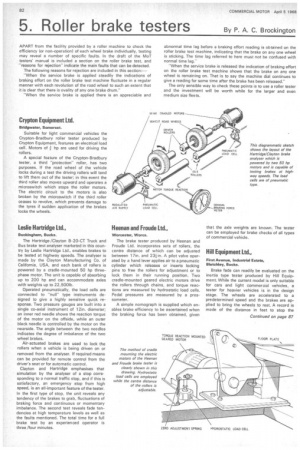5. Roller brake testers By P. A. C. Brockington
Page 84

If you've noticed an error in this article please click here to report it so we can fix it.
APART from the facility provided by a roller machine to check the efficiency lor non-operation) of each wheel brake individually, testing may reveal a number of specific faults. In the draft of the MoT testers manual is included a section on the roller brake test, and "reasons for rejection" indicate the main faults that can be detected.
The following reasons for rejection are included in this section:—
When the service brake is applied steadily the indications of braking effort on the roller brake test machine fluctuate in a regular manner with each revolution of the road wheel to such an extent that it is clear that there is ovality of any one brake drum."
"When the service brake is applied there is an appreciable and abnormal time lag before a braking effort reading is obtained on the roller brake test machine, indicating that the brake on any one wheel is sticking. The time lag referred to here must not be confused with normal time lag."
"When the service brake is released the indication of braking effort on the roller brake test machine shows that the brake on any one wheel is remaining on. That is to say the machine dial continues to give a reading for some time after the brake has been released."
The only sensible way to check these points is to use a roller tester and the investment will be worth while for the larger and even medium size fleets.




























































































































































